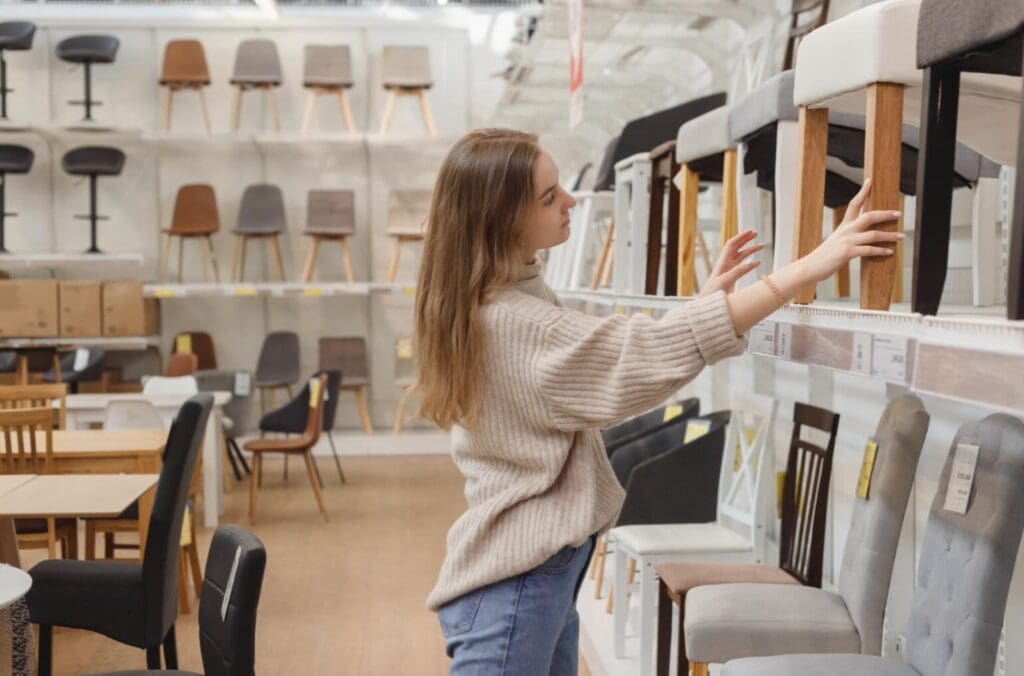In today’s rapidly evolving world, business and lifelong learning are more critical than ever. As technological advancements continue to disrupt industries, staying stagnant is no longer an option.
Lifelong learning is not just a buzzword; it’s necessary for anyone looking to thrive in business and beyond. That is why we have written out 10 reasons why it is necessary and essential for anyone in business today, in any industry.
Table of Contents
- 10 Reasons Why Lifelong Learning Is Essential for Business Success
- 1. The World is Ever-Changing
- 2. Lifelong Learning Helps You Stay Ahead of the Curve
- 3. Learning Can Improve Your Business
- 4. It Builds Resilience and Adaptability
- 5. Lifelong Learning Boosts Creativity
- 6. It Enhances Leadership Skills
- 7. It Keeps You Relevant
- 8. Technology is Transforming Every Industry
- 9. Lifelong Learning Fosters a Growth Mindset
- 10. It Prepares You for the Future
- Final Thoughts: Why Lifelong Learning Matters
- Related Content
10 Reasons Why Lifelong Learning Is Essential for Business Success
In this blog post, we’ll explore 10 reasons business and lifelong learning need to go hand in hand, illustrating how continuous growth and learning can significantly improve your professional and personal life.
1. The World is Ever-Changing
We live in unprecedented change, with many experts claiming we are in the midst of the next Industrial Revolution, mainly driven by advancements in Artificial Intelligence (AI), robotics, and other cutting-edge technologies.
For business leaders and professionals, this constant change demands adaptability. Businesses that fail to evolve risk becoming obsolete as newer, more innovative companies take their place. To keep up, you must embrace a mindset of continuous learning.
For example, AI tools such as ChatGPT or image-generation software are transforming the design, marketing, and customer service industries. Learning to use these tools positions you as an innovator effectively and ensures your business remains competitive in a fast-changing world.

2. Lifelong Learning Helps You Stay Ahead of the Curve
In business, staying ahead of the curve is critical. This means anticipating changes, understanding trends, and preparing for challenges before they arise. Lifelong learning equips you with the skills and knowledge to navigate these complexities.
For instance, staying informed about new design trends or software updates can give you an edge over competitors in the creative industry. Understanding innovations such as sustainable design or the latest 3D modeling techniques ensures you’re not just keeping pace with the industry but leading it.
3. Learning Can Improve Your Business
Learning isn’t just a personal growth strategy—it directly benefits your business. When you acquire new skills, you can implement innovative solutions and explore new opportunities that might have been out of reach.
For example, at Mondoro, I’ve embraced tools like Shapr3D, Procreate, and Blender to enhance design workflows. Here’s how each has contributed:
- Shapr3D: This intuitive 3D modeling software has been a game-changer for creating precise and professional designs. By learning this program, I’ve streamlined complex design processes, reduced production time, and improved accuracy.
- Procreate: Procreate has revolutionized digital illustration with its user-friendly interface and robust features. I’ve mastered this tool and created compelling, high-quality visuals that elevate my design projects.
- Blender: Learning Blender has opened up a world of possibilities in 3D animation and rendering, allowing me to push creative boundaries and produce designs that stand out in a crowded market.
Investing time in mastering these tools enhanced my skillset and provided a tangible competitive advantage for my business. This demonstrates how lifelong learning directly contributes to growth and innovation in the workplace.
4. It Builds Resilience and Adaptability
Businesses often face unexpected challenges, from economic downturns to shifts in consumer behavior. Successful entrepreneurs can adapt and thrive under these conditions.
Lifelong learning helps you develop resilience by keeping your skills sharp and your mindset flexible. For example, during the COVID-19 pandemic, many businesses had to pivot to digital solutions almost overnight. Those who had invested in learning digital tools or online marketing strategies could adapt quickly, while others struggled to catch up.

5. Lifelong Learning Boosts Creativity
Creativity is the lifeblood of innovation in business and continuous learning fuels that creativity. Exposing yourself to new ideas, tools, and perspectives opens up possibilities for problem-solving and innovation.
For instance, learning a new software program like Blender or experimenting with digital art tools like Procreate can spark fresh ideas that transform your business. Even learning about unrelated fields—such as psychology or sustainability—can inspire innovative approaches to your work.
6. It Enhances Leadership Skills
As a business leader, your ability to inspire and guide others is closely tied to your willingness to learn. Lifelong learning improves your technical skills and enhances your emotional intelligence, communication abilities, and strategic thinking.
For example, taking leadership, negotiation, or conflict resolution courses can help you manage teams more effectively. When employees see their leaders actively engaged in learning, it creates a culture of growth and inspires others to follow suit.
7. It Keeps You Relevant
Staying relevant is a constant challenge in a competitive job market. Employers and clients always seek professionals who bring fresh perspectives and up-to-date skills. By committing to lifelong learning, you ensure that your expertise remains valuable.
For example, industries like marketing and design have seen seismic shifts with the rise of AI-driven analytics and automation tools. Staying relevant in these fields means continually updating your knowledge and skills to align with the latest advancements.

8. Technology is Transforming Every Industry
No matter your industry, technology is reshaping business. From AI and machine learning to cloud computing and the Internet of Things (IoT), staying informed about technological trends is essential.
For instance, retail businesses leverage augmented reality (AR) to enhance customer experiences, while manufacturers adopt robotics to streamline production. Learning about these technologies allows you to capitalize on new opportunities and future-proof your business.
At Mondoro, we’ve embraced technology for design, collaboration, and project management. Using advanced tools has improved efficiency and opened up new ways to deliver value to clients.
9. Lifelong Learning Fosters a Growth Mindset
A growth mindset—the belief that abilities can be developed through dedication and effort—is a cornerstone of personal and professional success. Lifelong learning reinforces this mindset, helping you embrace challenges and view setbacks as growth opportunities.
In business, a growth mindset fosters innovation, resilience, and collaboration. For example, learning from feedback, whether from customers or employees, can lead to meaningful improvements in your products or services.
When you commit to lifelong learning, you’re essentially saying, “I’m not done growing yet,” which is a powerful motivator in any professional setting.
10. It Prepares You for the Future
The future is uncertain, but one thing is clear: change isn’t slowing down. Whether it’s AI, climate change, or shifting global economies, the challenges and opportunities of tomorrow will require new skills and perspectives.
Lifelong learning is your ticket to staying prepared. By staying curious and proactive, you ensure you’re ready to navigate whatever comes next—whether that means adopting new technologies, entering new markets, or rethinking traditional business models.
Final Thoughts: Why Lifelong Learning Matters
Lifelong learning is more than a personal commitment—it’s a business strategy. In a constantly evolving world, the ability to learn, adapt, and grow sets successful businesses apart from the rest.
Whether you’re mastering new tools like Shapr3D and Blender or exploring emerging trends in your industry, the time and effort you invest in learning will pay dividends in your personal and professional life.
At Mondoro, continuous improvement and innovation are key to staying ahead. By embracing lifelong learning, you can ensure your business thrives in an ever-changing world. So ask yourself: What will you learn next?
Find out more about how Mondoro can help you create, develop, and manufacture excellent home decor and home furniture products – don’t hesitate to contact me, Anita. Check out my email by clicking here or become a part of our community and join our newsletter by clicking here.
Mondoro gives out a FREE Lookbook to anyone interested. You can receive a copy of our latest Lookbook by clicking here.
Listen to our Podcast called Global Trade Gal. You can find it on all major podcast platforms. Try out to listen to one of our podcasts by clicking here.
Subscribe to our Mondoro Company Limited YouTube Channel with great videos and information by clicking here.
Related Content
7 Reasons To Use A Clear Coat On Gold Leaf
The gold leaf material is very fragile, so a clear coat will help to protect the gold leaf surface. A clear coat also toughens up the surface and helps slow oxidization. A clear coat on the gold leaf can also help us control the shine level we want on the gold leaf. You can manipulate the gold leaf with a clear topcoat on the gold leaf finish.
You can learn more by reading our blog, 7 Reasons To Use A Clear Coat On Gold Leaf, by clicking here.
When Retailers And Vendors Do Not Coordinate Their Supply Chain Management
When retailers and vendors do not coordinate their supply chain management, there can be chaos in the supply chain that can affect everyone. What happens in one part of the supply chain can have a massive impact on another; this is known as the Bullwhip Effect. Cooperation with programs like CPFR, vendors, and retailers better coordinate their activities.
To find out more, you can read When Retailers And Vendors Do Not Coordinate Their Supply Chain Management by clicking here.
What Can Be Made From Recycled Wood? Home Furniture Products We Love
Recycled wood can be used for all kinds of recycled wood furniture products. Recycled wood must be collected and sorted, and processed. But when working with recycled timber, there are some things that you need to remember, such as the furniture will have some marks, distressing and even holes in the wood.
You can find out more by reading What Can Be Made From Recycled Wood? Home Furniture Products We Love by clicking here.

